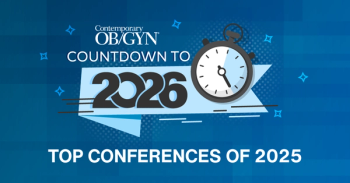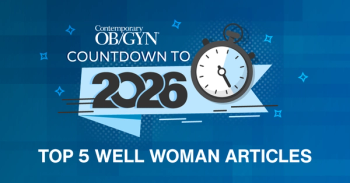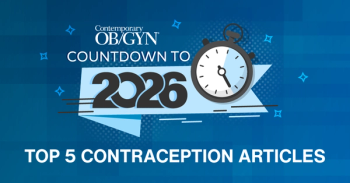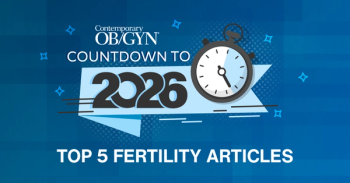
IR nifedipine as effective as IV labetalol for severe hypertension in pregnancy
A new review finds immediate release nifedipine offers comparable safety and efficacy to IV labetalol and hydralazine in managing severe hypertension during pregnancy.
The efficacy of immediate release (IR) nifedipine is similar to that of intravenous (IV) labetalol and IV hydralazine for managing severe hypertension in pregnancy, according to a recent review published in Pregnancy.1
Up to 8% of pregnancies worldwide are impacted by hypertensive disorders, significantly contributing to maternal mortalities.2 This includes preeclampsia, with an increased prevalence of 25% in the past 2 decades. Preeclampsia and associated hypertension are often transient, but delayed treatment increases the risks of adverse outcomes.
“Thus, blood pressure (BP) control remains a key component of the management of preeclampsia.,” wrote investigators.
Trends in antihypertensive use
Current guidelines recommend severe hypertension, defined by systolic BP of at least 160 mmHg or diastolic BP at least 110 mmHg, be managed within 30 to 60 minutes. IV labetalol and IV hydralazine are commonly used for management, alongside oral IR nifedipine. However, the former 2 methods remain recommended as first-line therapy unless unavailable.
A clinical trial reported increases in IV labetalol, IV hydralazine, and IR nifedipine rates between 2006 and 2015 of 60.9%, 21.3%, and 54.7%, respectively. This highlighted a preference for labetalol use over hydralazine or nifedipine use.
Since nifedipine is not recommended for front-line therapy, investigators conducted a review to determine its efficacy in pregnant patients. Literature comparing this method to IV labetalol was included in the analysis.
Clinical data highlights comparable outcomes
One of the articles assessed was a systematic review including 363 patients across 7 trials, 4 of which were conducted in low-resource countries. In the pooled analysis, a risk ratio of 0.42 was reported for persistent hypertension in patients receiving IR nifedipine vs IV labetalol, highlighting a reduction in risk.
A similar safety profile was also found between the 2 treatments, indicating IR nifedipine is equally safe and efficacious as IV labetalol. In another trial with 147 participants, the time to achieve a target BP of under 150 or 100 mmHg did not significantly differ between IR nifedipine or IV labetalol, at 35 vs 42 minutes, respectively.
The review also assessed clinical trials evaluating all 3 acute anti-hypertensive medications. In one trial, patients were randomly assigned 1:1:1 to each method, with BP and mean arterial pressure (MAP) measured 5 hours postintervention.
IR nifedipine successfully reduced MAP by 20% within 20 minutes of a single dose in 57.5% of patients, vs 42.1% from IV labetalol and 40.9% from IV hydralazine. After 3 doses, failure to reach this target was reported in 15%, 5%, and 35%, respectively. This indicated nifedipine as the most rapid in its effect, while hydralazine was more effective overall.
Meta-analysis confirms high efficacy for IR nifedipine
Similarly, a systematic review and meta-analysis evaluated the relative efficacy of antihypertensives in pregnancy. The cohort included 8324 participants across 74 trials. Based on the results, IR nifedipine and sublingual nifedipine most often helped patients reach the target BP, with IR nifedipine being the most effective when sub-grouping for preeclampsia.
Data has also indicated high safety for IR nifedipine. However, rare cardiovascular risk factors highlight the need for risk-benefit consideration on an individual level. Overall, the review highlighted a growing body of evidence indicating at least equal efficacy to IV labetalol and IV hydralazine from IR nifedipine in managing severe hypertension in pregnancy.
“Furthermore, we believe there is adequate evidence to support a change to preferential utilization of IR nifedipine for severe hypertension in pregnancy except in the case of imminent operative cesarean delivery or when oral intake is otherwise contraindicated,” wrote investigators.
References
- Sarker MR, Wen T, Teal EN, Emeruwa UN. Immediate release oral nifedipine for severe hypertension in pregnancy—time for re-prioritization as a management option. Pregnancy. July 2025. doi:10.1002/pmf2.70068
- Committee on Obstetric Practice. Committee opinion no. 692: emergent therapy for acute-onset, severe hypertension during pregnancy and the postpartum period. Obstet Gynecol. 2017;129:e90-e95. https://ilpqc.org/wp-content/docs/htn/ACOG%20Committee%20Opinion%20692.pdf
Newsletter
Get the latest clinical updates, case studies, and expert commentary in obstetric and gynecologic care. Sign up now to stay informed.




